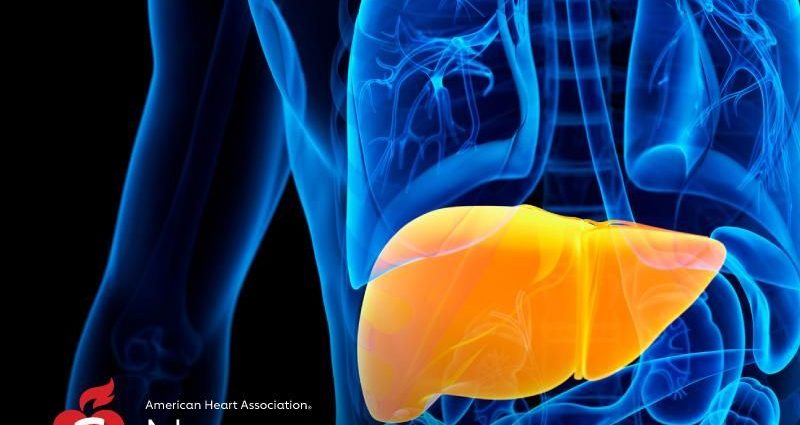WEDNESDAY, Nov. 16, 2022 (American Heart Association News) — An abnormal buildup of fat in the liver not caused by alcohol may greatly increase the risk of heart failure, according to new research.
Nearly 1 in 4 adults in the U.S. has a condition known as nonalcoholic fatty liver disease, or NAFLD. Scientists already knew NAFLD can lead to permanent liver damage and increase the risk for atherosclerosis, when plaque builds up in the arteries.
But there has been less research on NAFLD’s relationship with heart failure, a term used when the heart isn’t pumping as well as it should be. About 6 million U.S. adults have heart failure, which can’t be cured but can be treated with lifestyle changes, medications and surgical procedures.
Researchers looked at national health survey data from 2005-2018 and found more than 3.8 million adults with NAFLD, including about 400,000 who also had heart failure. People with NAFLD who were older, male or who had diabetes or coronary heart disease were at particularly higher risk for heart failure. But even after adjusting for age, race and gender, the researchers found adults with NAFLD were 3.5 times more likely to have heart failure than those without NAFLD.
“We expected a higher hazard, but not this high,” said Dr. Vardhmaan Jain, the study’s lead researcher and a cardiology fellow at Emory University School of Medicine in Atlanta.
The findings, presented this month at the American Heart Association’s Scientific Sessions, are considered preliminary until full results are published in a peer-reviewed journal.
“Doctors need to keep a close eye on cardiac function as well as liver biomarkers and make sure patients with heart failure are not developing fatty liver disease and vice versa,” Jain said.
He said obesity, diabetes and high cholesterol often play a major role in NAFLD. He recommended using the AHA’s Life’s Essential 8 checklist for improving and maintaining cardiovascular health. The list calls for keeping a healthy weight, not smoking, being physically active, eating a healthy diet, getting enough sleep and controlling blood pressure, cholesterol and blood sugar.
“The results of this study really hammer home the message about the importance of taking your health seriously early in life and maintaining a healthy lifestyle for the long run,” Jain said.
He said the research does not prove cause and effect and was unable to distinguish between different types of heart failure. He called for future studies that follow people with NAFLD over time to see what factors might help predict heart failure.
Dr. P. Barton Duell, who was not involved in the new research, said the results “are another reminder that the diagnosis of NAFLD is associated with increased risk” of heart problems.
Duell, a professor of medicine in the Knight Cardiovascular Institute and Division of Endocrinology, Diabetes and Clinical Nutrition at Oregon Health & Science University in Portland, chaired the committee that wrote a recent AHA scientific statement about NAFLD and cardiovascular risk. He said NAFLD also is tied to an increased risk of cirrhosis of the liver, liver failure and liver cancer. As obesity and metabolic syndrome rates continue to rise, he urged medical professionals and the public to take NAFLD seriously.
“NAFLD is an underdiagnosed and underappreciated health risk,” Duell said. “It’s very common in the general population, and it’s important to diagnose it and treat it early.”
American Heart Association News covers heart and brain health. Not all views expressed in this story reflect the official position of the American Heart Association. Copyright is owned or held by the American Heart Association, Inc., and all rights are reserved. If you have questions or comments about this story, please email editor@heart.org.
By Thor Christensen, American Heart Association News
Copyright © 2026 HealthDay. All rights reserved.

